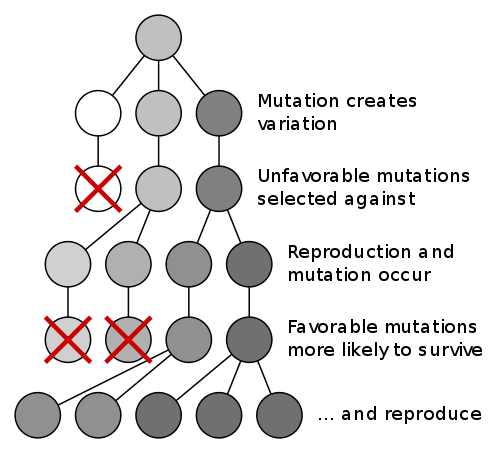
In this post we are going to continue looking at the theory of evolution which is the dominant scientific view of the mechanism of creation. Previously I pointed out that evolution is a loaded word that has multiple meanings for people and that part of the conflict between Christianity and science in this area is due to misunderstandings about the meanings of the word. In the previous two posts I discussed two of the meanings: change over time and common ancestor. Now we are going to look at the third meaning, a mechanism, evolution by natural selection, which explains the observations of change over time and common descent.
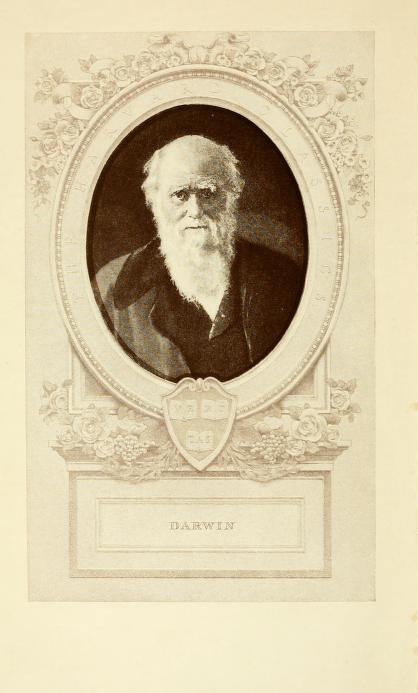
Evolution by natural selection. The theory of evolution by natural selection was first proposed by Charles Darwin in his book Origin of Species published in 1859. He developed the theory, in part, as a result of observations made during his five year voyage on the HMS Beagle which began in 1831.
Evolution by natural selection is an adaptive mechanism that
- allows a population of a particular type of organism to optimize its fit to the environment in which it lives
- allows the population to adapt to beneficial and harmful changes in its environment
- allows the population to explore different ecological spaces where new resources may be available and that may reduce competition for these resources by other types of organisms.
An example of the latter feature is the transition from fishes to amphibians to land animals (reptiles and mammals) that allowed vertebrate animals to expand into a vast new ecological space (dry land).
There are two aspects of evolution by natural selection. One is a mechanism for generating diversity in a population of organisms and the second is a process, natural selection, that selects for reproductive fitness.
Genetic diversity is generated in several ways but the mutation of genes is the most important for generating new heritable traits. A mutation is a physical alteration in the DNA that makes up a gene. These changes can be neutral, have no effect, or have positive or negative effects on gene function. These changes are passed on to successive generations if they occur in reproductive cells (sperm or egg). There are four main ways that mutations occur. One is by the alteration of a single letter of the genetic information of a gene (point mutation). A second is through the deletion of large segments of the gene or the insertion of a new segment of DNA into the gene. A third is by rearrangements of large segments of the DNA within a particular chromosome and finally the fourth way is by duplication of a gene.
The second aspect of the adaptive mechanism is natural selection. People sometimes refer to the process of natural selection as “survival of the fittest” but this is not a very accurate description. The selection in this process actually occurs based upon reproductive fitness. Organisms that are best adapted to their environment are more effective at passing their genetic traits on to the next generation while those that are less well adapted are less successful in passing on their genetic traits. Over time and many generations this results in the filtering out of traits in the population that are unfavorable for reproductive fitness and the enrichment of favorable traits.
How does this process generate new species of organisms? A species is a population or group of populations whose members have the potential to interbreed in nature and produce viable, fertile offspring, but do not produce viable, fertile offspring with members of other groups of organisms. The separation of one species into two or more species is referred to as speciation. Once speciation has occurred the two new species evolve separately over time.
Speciation can occur when one population of a species becomes reproductively isolated from another population. This may occur because of a genetic change in a subpopulation that prevents it from mating with another subpopulation of the original species. Speciation may also happen because of a physical separation of two subpopulations of a species. As an example, the continents of Africa and South America were once joined as a single supercontinent called Gondwana. You can easily see this by comparing the shape of the western edge of Africa and the eastern edge of South America. This separation through plate tectonics resulted in great differences between the animals that populate the two continents.
To sum up, evolution is an adaptive mechanism that uses a combination of inherent genetic diversity and a filtering mechanism, natural selection, that selects on the basis of reproductive fitness and that gradually over many generations increases the reproductive fitness of a population of a given species of organisms. When a subpopulation of a species becomes reproductively isolated from other members of the species, a new species is generated. The original and new species then evolve independently. Speciation sometimes occurs during the process of adaptation to changes in the environment or after a population moves into a new ecological space.
Similarity to artificial selection. The process of evolution by natural selection is similar in many was to the process of artificial selection or selective breeding used to improve domesticated animals and plants. In artificial selection breeders take advantage of the genetic diversity within domesticated animal and plant species. Breeders select members of the population that display favorable traits and selectively breed them. The resulting offspring are then subject to further rounds of selective breeding until the desired traits are optimized. Selective breeding (artificial selection) of both plants and animals has been practiced for thousands of years resulting in the domestic animal breeds and plant varieties used in agriculture today. For example, broccoli, cauliflower, cabbage, brussel sprouts, kale and kohlrabi were all derived from a wild mustard species by selective breeding that accentuated different parts of the plant. Another example of the power of this approach is the enormous range of characteristics among modern dog breeds.
When he proposed the theory of evolution by natural selection, Darwin did not know the basis for the variation within species that was at the heart of the mechanism. This came later through the discovery of the genetic basis of inheritance by Gregor Mendel and subsequent work on the molecular basis of genetic information and genetic variation. Our current understanding of the theory of evolution, known as the modern synthesis, combines Darwin’s theory of natural selection with Mendelian genetics.
An important feature of natural selection is that it is an automatic process and thus does not require the human intervention needed by artificial selection. However, the fact that natural selection is automatic does not eliminate the possibility of influence by outside events or sources. The outcomes of evolution have been influenced by outside factors such as ice ages, continental drift and asteroid strikes leading to mass extinctions. The automatic nature of the process also doesn’t rule out interventions or guidance by God. I’ll have more to say about this latter point in a later post.
Evolution as an automatic process. One feature of evolution by natural selection that sometimes troubles Christians is that it is an automatic process and thus does not require the human intervention needed by artificial selection. However, the fact that natural selection is automatic doesn’t eliminate the possibility of influence by outside events or sources. The outcomes of evolution have been influenced by outside factors such as ice ages, continental drift and asteroid strikes leading to mass extinctions. The automatic nature of the process also doesn’t rule out interventions or guidance by God. I’ll have more to say about this latter point in a later blog.
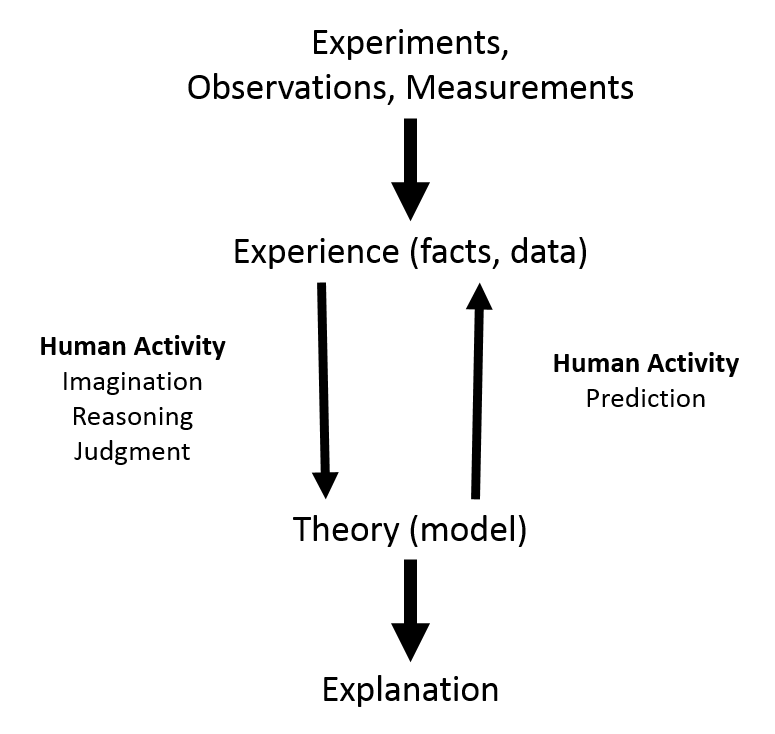
What is a theory?
Over the last three blogs we have been talking about the theory of evolution by natural selection. But what exactly is a theory?
Science uses an empirical method that involves the interplay of experience with theory. Sources of experience include experiments, observations and measurements. A theory is a well-established model that explains the experience. The empirical approach is a human activity that requires human imagination and creativity both in developing the theory and devising ways of testing it.
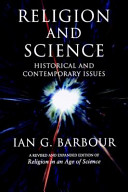
Criteria for evaluation of a theory. In his book Religion and Science: Historical and Contemporary Issues, Ian Barbour [1] outlined four criteria for assessing theories in normal scientific work.
- Agreement with the data. This is the most important criterion. It does not prove the theory but substantial agreement with the data provides strong support for a theory. In the case of evolution the theory explains the diversity of life, origin of relationships between living creatures, the fossil record of life’s history and the historical record in our genes (genetic fossils).
- Coherence. A good theory must agree or be logically connected with other theories. Simplicity and internal agreement are also important. The theory of evolution is a simple, elegant explanation for the history and diversity of life that is fully in agreement with current theories of modern science – physics, chemistry, cosmology, geology and biology.
- Scope. A good theory must be comprehensive in scope and able to unify disparate domains of knowledge. It must be supported by multiple kinds of evidence and be applicable to wide ranges of relevant variables. As we have seen the theory of evolution is supported by many different kinds of evidence. With regard to its comprehensive scope, Theodosius Dobzhansky, a devout Christian and one of the architects of modern evolutionary thinking famously said that “nothing in biology makes sense except in the light of evolution.”
- Fertility. A good theory must serve as a framework for an ongoing research program. The theory of evolution provides the framework for modern research in anthropology, paleontology, geology, genetics and medicine.
What evolution is not. Evolution is not a fact. Evolution is a theory or model that explains scientific facts and data relating to natural history. All scientific models are tentative and are subject to change based on new experimental findings. Nevertheless they represent progress towards a true understanding of how nature works. As an example, picture the way that adjusting a pair of binoculars gradually brings a distant object into focus.
Evolution is not a hypothesis or educated guess. This is what people sometimes mean when they say that evolution is “just” a theory. A hypothesis is a supposition that appears to explain a set of phenomena and is advanced as a basis for further explanation. In contrast, based on the criteria discussed above, evolution is a well-established theory that explains the history of life on earth and the wider range of biological species both present and past.
Evolution is a scientific explanation for the history and diversity of life on earth. It is not a justification for atheism nor does it rule out God’s providential guidance of a natural mechanism that he created. I’ll have more to say about this in later posts.
Summary
In the last three posts, I have outlined evidence for the scientific view of the history of life on earth. I said that the theory of evolution is the dominant scientific paradigm, but that evolution is a loaded word that can mean different things to different people. There are four basic meanings:
- change over time
- common descent
- a mechanism (natural selection)
- a justification for atheism.
The first three meanings are scientific conclusions which I have discussed in these posts. The fourth is a metaphysical interpretation of the scientific findings which I will talk about in a later post. Confusion about scientific conclusions versus metaphysical interpretations is a source of tension between Christianity and science.
In The Mechanism of Creation – The View from Science, Pt. 1 I discussed evidence for three dimensions of evolutionary change over time: cosmic, chemical and biological. In The Mechanism of Creation – The View from Science, Part 2 I focused on the second meaning of evolution, common descent, which is the idea that all living things including humans have descended through modification over time from a common ancestor. I presented four types of evidence in support of common descent:
- the common chemical and molecular basis of life
- family relationships among living organisms
- transition forms in the traditional fossil record
- genetic fossils which provide a window into history of the living creatures and which can be used as markers to trace the family history of organisms.
Finally in the current post I discussed the third meaning of evolution, which is the mechanism that underlies the process of evolution. Evolution by natural selection is the mechanism that drives evolution and that explains the observations of change over time and common descent. I talked about the nature of a theory as a scientific model that explains a natural phenomenon as well as four criteria for evaluating theories. The theory of evolution satisfies all four criteria.
Looking ahead: In the next series of posts we are going to look at some questions that Christians have about evolution. The first one we will address is whether evolution really explains the origin of the diversity and complexity of life. We’ll be looking at the case of Intelligent Design which argues that certain features of the universe and of living things are best explained by an intelligent cause, not an undirected process such as natural selection.
Questions for further reflection:
- What was your concept of a theory? How did it agree/disagree with the scientific definition of a theory given above?
- What does the word “science” mean to you? How has this post influenced your thinking about the nature of science?
- What tensions do you feel about the idea of evolution by natural selection and its implications for natural history?
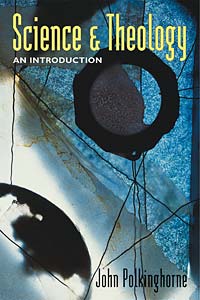
Suggestions for further reading:
- Finding Darwin’s God: A Scientist’s Search for Common Ground between God and Evolution, Kenneth R. Miller. Harper Collins, 2007.
- Creation or Evolution: Do We Have to Choose? Denis Alexander. Monarch, 2008.
- The Language of God: A Scientist Presents Evidence for Belief, Francis S. Collins. Free Press, 2007.
- Science and Theology: An Introduction, John Polkinghorne. Fortress Press, 1998. The first chapter The Area of Interaction is a helpful resource about the nature and limitations of science.
- Religion and Science: Historical and Contemporary Issues (Revised), Ian Barbour. Hymns Ancient & Modern Limited, 1998.
- Evolution Basics: An Introductory Course on Evolutionary Biology, This is a multipart series from The BioLogos Forum written by BioLogos Fellow Dennis Venema.
- Talk Origins Archive, This Web site contains a collection of articles and essays about evolution. It is a good source if you want to delve more deeply into the scientific evidence for evolution.
- Added by the editor: PDF with the titles and links to the posts in Tom Ingebritsen‘s Christianity and Science series. Yes, this was created to meet the requests of readers and will be updated. Your interest in and encouragement of this series is much appreciated.
Notes added by the editor:
- Throughout his career, Ian Barbour has been at the forefront of the dialogue between scientists and theologians. Trained as a physicist, with a Ph.D. from the University of Chicago (1950), and as a theologian, with a B.D. from Yale University (1956), Barbour has drawn on the philosophical insights of both disciplines to transcend their boundaries. As a professor of both physics and religion, Barbour’s initial books depict the relationships between physical science and religion. For example, his broad-ranging overview Issues in Science and Religion (1966) and his classic Myths, Models and Paradigms (1974) focus on the language parallels between these disciplines. During the 1970s and 1980s, Barbour began to expand his focus to include technological and environmental themes; at that time, the field of STS emerged in response to increased concern over technology’s societal impacts, especially regarding energy and the environment. During this period he published Technology, Environment, and Human Values (1980) and Energy and American Values (1982), as well as several edited collections of essays, including Earth Might Be Fair: Reflections on Ethics, Religion, and Ecology, (1971) and Western Man and Environmental Ethics (1972). All of the books focus on the need for an enhanced technological and environmental ethic. Recently, Barbour has continued to pursue these intertwined themes in his 1989-91 Gifford Lectures at the University of Aberdeen, Scotland, which were published as Religion in an Age of Science (1990) and Ethics in an Age of Technology (1993). Barbour serves as Winifred and Atherton Bean Professor Emeritus of Science, Technology, and Society at Carlton College. — From the Google Docs About Page for Religion and Science: Historical and Contemporary Issues (Revised). Accessed 2/8/2014. ↩
Tom Ingebritsen is an Associate Professor Emeritus in the Dept. of Genetics, Development and Cell Biology at Iowa State University. Since retiring from Iowa State in 2010 he has served as a Campus Staff Member with InterVarsity Graduate & Faculty Ministry at Iowa State University

Hi Tom,
Thank you for this post. You obviously know your subject. As a Christian who talks to university students about Christ every week, I know students are particularly concerned with the idea that Christianity is not intellectually viable because it is anti-science. I love science and believe it actually provides strong support for the existence of God.
I wanted to ask your opinion on recent challenge to Darwinism from genomics. Before I get to that I want to remind readers of a little history of Darwinism.
Decades ago, new evidence caused Darwinism to be modified into a “new synthesis” and everyone called the new theory “neo-Darwinism.” For some reason, people stopped using the term neo-Darwinism and went back to calling it Darwinism even though they still mean neo-Darwinism.
Now Eugene Koonin is calling for Darwinism to be modified again and he is suggesting the name “Darwinism in the Light of Genomics.” His first paper can be found at http://nar.oxfordjournals.org/content/37/4/1011.full.pdf
The paper claims that genomics has disproven Darwin’s theory of the “tree of life” and the “last universal common ancestor” or LUCA. Genomics proves there are hundreds of life forms that are unrelated to each other. Koonin claims we need to speak of the “forest of life.”
I would like to know your opinion of Koonin’s paper and his followup papers. They have been cited many times in the literature, but I don’t see them discussed much in the context of science and faith. I think this is a lost opportunity.
As we know, naturalistic theories on the origin of life theories are not panning out. Koonin’s paper makes the issue more difficult. Instead of having one miracle to explain (life from non-life), now the naturalists have many miracles to explain.
What are your thoughts?
Ron-
Thanks for your comments and the citation of the work by Eugene Koonin. As I pointed out above in this blog, evolution is a theory (model) that seeks to explain scientific facts and data relating to natural history. As with all scientific models the theory of evolution is subject to change in the light of new experimental findings. I also pointed out that changes in a theory generally represent progress towards a deeper understanding of what’s going on.
In the case of evolution, as you pointed out, Darwin’s original theory was modified as the result of the rediscovery early in the 20th Century of Mendel’s work on genes and subsequent studies that revealed their molecular nature. The existence of genetic variants explained the origin of the variation of animal and plant characteristics that was at the heart of Darwinian evolution. This modified theory is known as the Modern Synthesis or neo-Darwinism. Far from disproving Darwin’s theory, the Modern Synthesis greatly deepened our understanding of the process.
New findings that lead to the modification of a theory often come as a result of the development of new technologies. The development of DNA sequencing technologies, stimulated by the Human Genome Project, has revolutionized our understanding of genomes and their evolution. By genome, I mean the complete DNA complement of an organism. As of 2009 the collection of completely sequenced genomes included those from thousands of viruses, from about a 1000 prokaryotes (bacteria and archae) and from about 100 eukaryotes (organisms like animals and plants whose cells have membrane enclosed compartments such as the nucleus). In particular this work has opened up the micro-world of prokaryotes and viruses to evolutionary study.
What Eugene Koonin refers to as Evolutionary Biology in the Light of Genomics and Microbiology has not changed the understanding of common descent with modification as a central principle of evolutionary theory. In Table 1 of the paper you cited Koonin states that “Comparative genomics leaves no doubt of the common ancestry of cellular life.” The genomic data are also consistent with some kind of Last Universal Common Ancestor or Ancestral State (see Fig. 1 and Table 1). The new information from the genomic work also has not eliminated natural selection as a foundational process in adaptive evolution especially in the case of animals and plants. What the work does show is that there are other processes that are important in the evolution of the diversity of organisms particularly in the case of prokaryotes and viruses.
Tom
Tom, thank you for the thoughtful reply. Since I use history and science to provide evidence for God’s work in the world, it is important to me that I understand the science correctly.
I came across a paper where researchers analyzed mitochondrial DNA to show that Neanderthal mtDNA did not contribute to human mtDNA (see http://www.nature.com/nature/journal/v404/n6777/pdf/404490a0.pdf). This is a pretty important finding in my view and I thought perhaps Koonin was saying something similar regarding other advanced life forms and the origin of life.
Perhaps you can answer another question for me. I understand life appeared on earth almost as soon as the planet cooled enough to be habitable. Do you consider the speed at which life appeared to be surprising given what we know about origin of life studies?
Ron,
In reference to human and Neanderthal mitochondrial DNA, I gather what you find significant about the result you cite is that it indicates humans, as a group, are not descendants of Neanderthals (as a group). I think that’s an accurate conclusion from the study, but it is also a confirmation of what was already understood to be the relationship between the two populations — that they share a common ancestor which was neither human nor Neanderthal.
Note that this finding must also be kept in mind with other findings about humans and Neanderthals, such as http://genetics.med.harvard.edu/reichlab/Reich_Lab/Press_files/2014_Sankararaman_Nature.pdf or http://www.sciencemag.org/content/early/2014/01/28/science.1245938.short (paywalled). Those recent papers report small portions of Neanderthal DNA in the genomes of present humans.
How do we reconcile these results with the paper you cited? First, the conclusion from these studies is that (some) present day humans have at least one Neanderthal in their lineage. This is not the same thing as the entire human population being descended from a purely Neanderthal population; instead it points to some amount of intermingling after humans and Neanderthals became distinct populations.
Second, mitochondrial DNA is only passed from mother to child. So in order to find evidence of the same kind of intermingling in the mitochondrial genome, we would have to find the living humans who have a purely matrilineal connection to a female Neanderthal, which seems exceedingly unlikely when sampling just a handful of living humans. Thus, to the best of my understanding, there are no contradictions between these various observations.
As for the question about the timing of the appearance of life relative to the earth’s formation, I think it would be hard to assess a level of surprise without a complete model of abiogenesis. For example, if that cooling process helped to create the conditions necessary for abiogenesis, then the timing wouldn’t be surprising at all.
Ron,
In the interest of all of us understanding the science correctly, I wanted to follow up on the “forest of life” concept.
“Genomics proves there are hundreds of life forms that are unrelated to each other. Koonin claims we need to speak of the ‘forest of life.'”
As I understand it, the “forest of life” concept does not come from a notion that there are living organisms which are unrelated, implying multiple abiogenesis events (which you seemed to be alluding to). Instead, it is a modification of the “tree of life” idea that is still consistent with a single abiogenesis event and, as Tom pointed out, a Last Universal Common Ancestor.
The original “tree of life” idea was to take the concept of a family tree, a record of which progeny go with which parents, and expand it to include every organism that ever lived. Such a tree is theoretically possible but practically infeasible; nevertheless, we can “zoom out” and get a sense of the larger limbs of that tree even if we can’t draw every branch.
When we began to understand the mechanisms of genetics and genetic inheritance, the assumption was that all organisms get all of their genes from their parents. So if you traced the lineage of any individual gene, it would follow the contours of the family tree of organisms that we drew before, reflecting the passing of genes from parent to progeny.
More recently, we have begun to appreciate that there are more ways to get genes other than from your parent(s). Prokaryotes in particular have many options for sharing genes with their peers, either directly or via viruses. And even multicellular eukaryotes like humans can sometimes pass genes to peers via retroviruses. We still don’t know exactly how much this contributed to evolution relative to passing genes from parents to progeny; Koonin represents a school of thought that says it is very significant.
One consequence of passing genes to peers is that if we try to trace the lineage of an individual gene, it may not follow the contours of our organism-level tree of life; there will be lines connecting siblings or (possibly very distant) cousins where the organism-level tree will only have lines connecting parents and progeny. And each gene can potentially have its own diagram different from that of all other genes.
So when Koonin speaks of a “forest of life” he is referring to the collection of gene-level “trees” that represent how individual genes were passed from one organism to another. This is different from the organism-level tree, which Koonin still acknowledges as including every known organism and tracing back to a common ancestor.